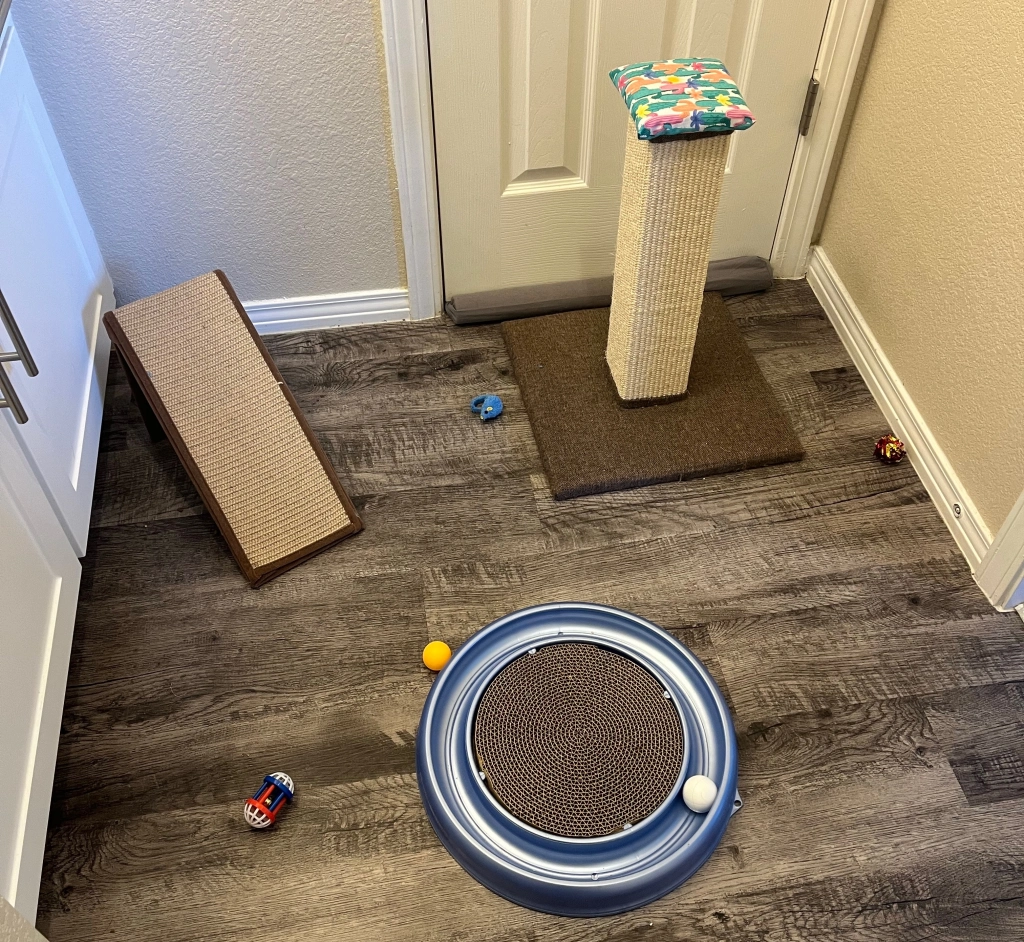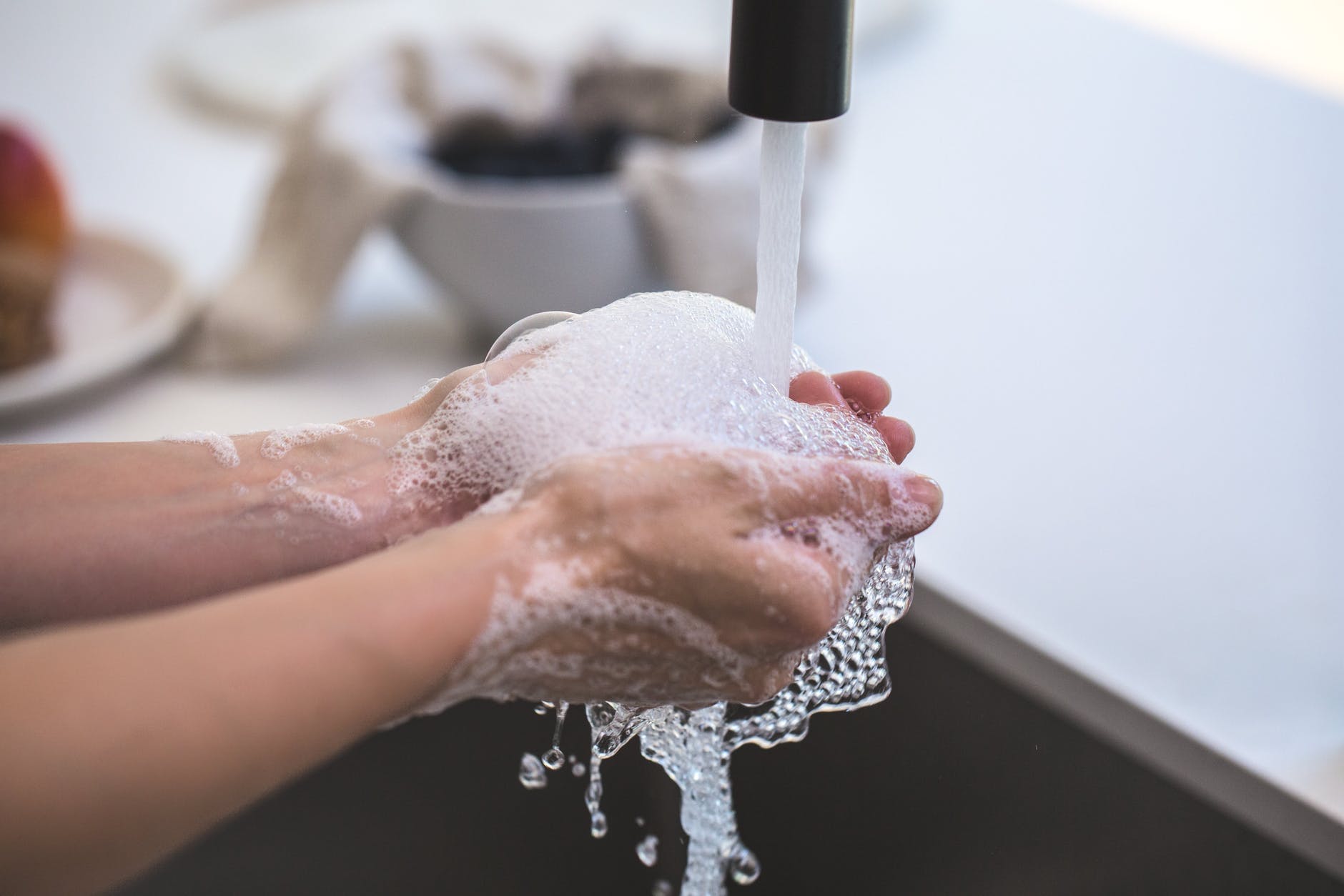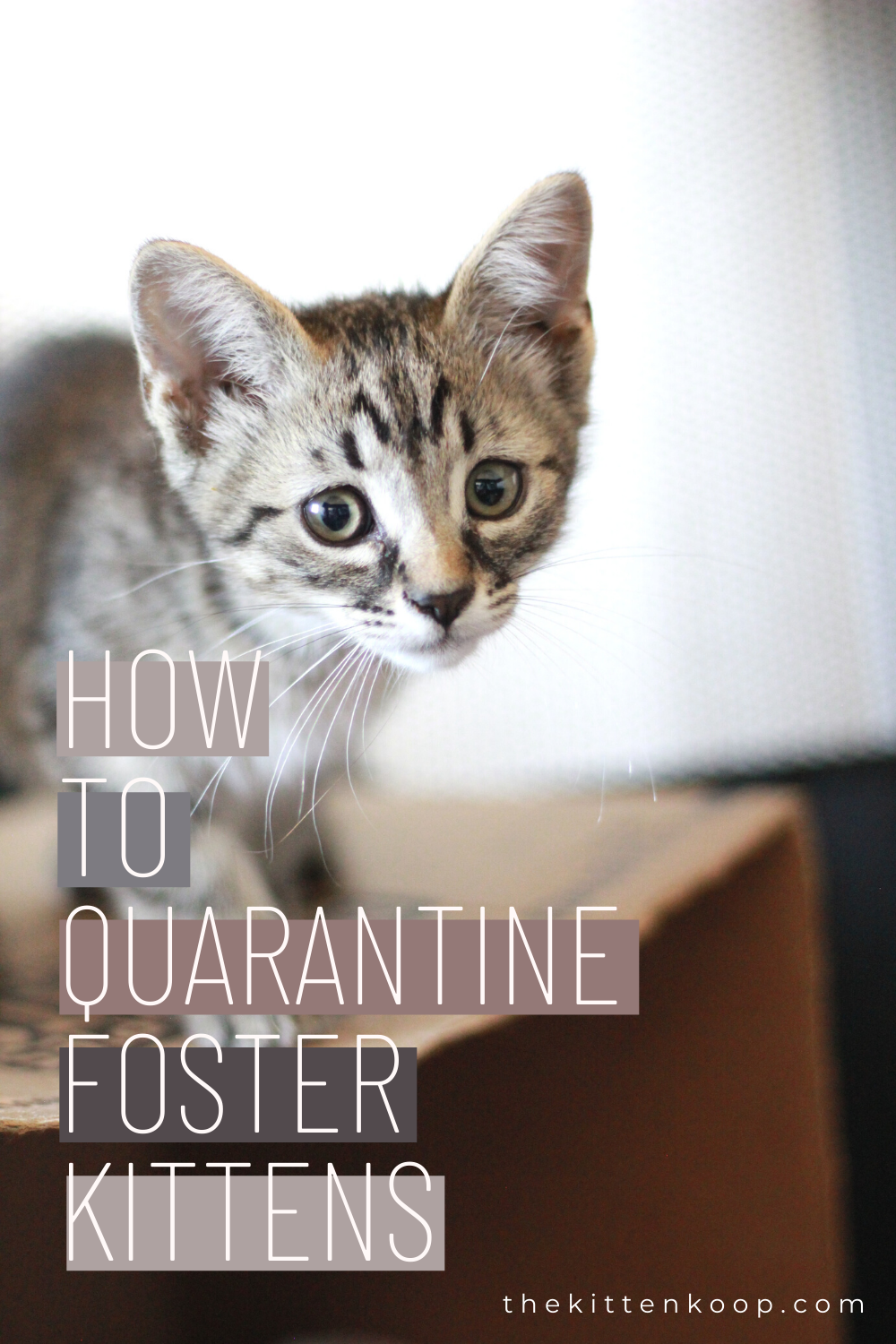Find out what a quarantine period is, why it’s important, and how to carry it out successfully in your home.
What is a Quarantine Period?
A quarantine period is a 2 week time frame of no contact and no shared space between unrelated groups of animals. This applies to same-species situations in particular. This post is written with foster kittens in mind, but the rules apply to older cats as well.
Why Should You Quarantine Foster Kittens?

The bottom line is you never know what a foster kitten will bring inside your home. Even if you have a report of good health from a shelter or through word of mouth, some common viruses, parasites, and other health conditions may not show up until after the fosters are in your home. Read When Fosters Get Sick for common illnesses in foster care to be aware of.
It takes at least 2 weeks for illnesses to shed in the environment or to spread and begin to present symptoms. Keep in mind that this is a 2 week minimum period, because once any symptoms present themselves during the quarantine period, you’ll need to start the quarantine period over. This is one reason why it’s so important to keep your resident pets separated from foster animals during this time. Without a quarantine period, your resident pets could get sick.
Please take this quarantine period seriously. It’s no fun to have sick fosters and sick residents at the same time. Imagine all the stress this will cause your fur babies and all the vet bills you’ll rack up! A successful quarantine will protect your resident pets and the fosters at the same time.
Give to our current fosters:
Give to our current fosters:
Give to our current fosters:
Choose an amount
Or enter a custom amount
Any contribution is greatly appreciated!
– $6.00 allows us to buy a bag of litter
– $25 helps us buy 12 cans of cat food
– $100+ allows us to fund general medical procedures for any felines that we foster on our own
Thank you so much for considering a donation! 🙂
Any contribution is greatly appreciated!
– $6.00 allows us to buy a bag of litter
– $25 helps us buy 12 cans of cat food
– $100+ allows us to fund general medical procedures for any felines that we foster on our own
Thank you so much for considering a donation! 🙂
Any contribution is greatly appreciated!
– $6.00 allows us to buy a bag of litter
– $25 helps us buy 12 cans of cat food
– $100+ allows us to fund general medical procedures for any felines that we foster on our own
Thank you so much for considering a donation! 🙂
Protect Your Resident Pets

Cat-to-cat transmission is the biggest concern, and you don’t want to knowingly subject your cat to getting sick. Unfortunately, it’s very easy for felines to pass bacteria, parasites, and viruses back and forth. Your resident kitties are likely already stressed to some degree from the presence of the fosters alone. The stress itself may weaken their immune systems a bit and make them more susceptible to whatever the fosters are carrying. If you’re fostering for an organization, I can almost guarantee that they will never cover any medical expenses that you incur as a result of a resident pet’s exposure to foster kittens.
Regardless of the 2 week quarantine period, please vaccinate your resident pets! For cats in particular, make sure they’re current on their rabies, FVRCP, and feline leukemia (FeLV) vaccines.
Dogs are thankfully not susceptible to some of the common feline illnesses. However, I don’t recommend introducing your dog to your fosters before quarantine is over just to be on the safe side. It is also possible that your dog may indirectly expose your resident cats to illness if introduced too early.
Protect Your Fosters
It is your responsibility as a cat or kitten foster to protect fosters from exposure to illness. Foster kittens will almost never show up to your home fully vaccinated for the entire spectrum of viruses and diseases. Because of this, it would be incredibly risky to expose the fosters to your resident cats, and vice-versa!
Check your vet records or get your resident cats tested for feline immunodeficiency virus (FIV) and feline leukemia (FeLV). If your cat has tested positive for either of these, consider keeping them separate from fosters indefinitely. FIV is transmitted between cats via deep bite wounds (Cornell University College of Veterinary Medicine). FeLV is transmitted between cats via bite wounds and grooming (Cornell University College of Veterinary Medicine).
How to Get Through a Successful Quarantine Period

No physical contact
Separate space + Separate supplies = No physical contact! So, your best tool for this 2-week formula is a closed door to keep your fosters completely separate from your residents. Bonus points for using a door draft stopper so cats can’t swap beans when you’re not looking!
Illnesses can spread via the air, physical contact, and physical materials. Stick with the following tips for 2 weeks and you’ll have made it through a successful quarantine!
Please keep in mind that the quarantine period will restart if necessary. If fosters (or residents!) show signs of illness at any point during quarantine, you need to count that as Day 1.
Use space and materials that are easy to disinfect

It’s best if your foster room is in a location that’s easy to disinfect. The reason for this is that not only will you need to disinfect your foster space and supplies between each group of fosters at the very least, but you will also need to disinfect anything your resident pets will regain access to once the fosters are in their forever homes. Unless you’re prepared to use a carpet cleaner between each group, it’s much easier to clean hard surfaces and non-porous materials. This is why spare bathrooms with flooring such as tile or laminite are an easy go-to for foster room setups. You can also use soft-sided playpens or transparent panels with a tarp or blankets to cover any carpet.
Keep items separate
It’s also absolutely necessary to keep fosters’ and residents’ supplies completely separate from one another. Everything you can think of, from cans of food to litter box scoops, poses a potential exposure risk. For a fancy example, I use two separate Litter Genies in my home. One for foster cats and kittens, and one for my resident cats. If I were to use one Litter Genie throughout the home, all kinds of bacteria and bodily fluids would be shared with everyone. NOT a good idea.
You might want to consider wearing different clothing between groups, but this depends on the circumstances. I’ve done this with two foster groups in the past: one with giardia and one with fleas. Changing clothes between groups keeps your resident pets from coming into contact with potential parasites and traces of bodily fluids.
As much of a pain as it’s going to be, think about what else you likely have with you when you’re interacting with the fosters…Your phone! It’s important to document all the precious moments with your foster kittens, so please disinfect your phone before heading out of the foster room. I spray Rescue disinfectant on a clean rag to disinfect my phone. Rescue disinfectant kills a large number of viruses and bacteria, so I highly recommend it!
Keep your hands clean

The next most important thing you can do is to ALWAYS wash your hands after working with your foster kittens. It’s best practice to have clean hands before and after interacting with different groups of cats, but at the very least, make sure your hands are washed extremely well when it’s time to leave the foster room.
Stick to the 2 week commitment
I can’t say it enough, so once again, stick with these steps for a minimum of 2 weeks and you’ll have successfully quarantined your foster kittens. If everyone is completely healthy by the end of that period, you can relax a bit with the level of precaution you take between groups. In my case, once the quarantine period is over I keep all supplies separate for sanitary reasons, but I don’t freak out if my resident cats want to take a stroll around the foster room.
Should You Quarantine a Newly Adopted Kitten from Other Cats?

Ultimately, you of course get to make the final call on this one. If you’ve recently adopted a kitten, it wouldn’t hurt to keep them separate from your resident cat at first. However, this is not necessarily for the purpose of a medical quarantine.
I say this because you’ll likely need to spend at least a few days gradually introducing your cat to your new kitten anyway (post coming soon). You can monitor for symptoms of illness and parasites during this time, but ideally you’ll be able to trust the shelter’s health report and the results of your first vet visit.
Please know that you can do this! It might feel like a giant pain at first, but I promise that with practice it will get easier.
Happy fostering! 🙂
Disclaimer: This post contains affiliate links. Any purchase made through these links may help me earn a small commission.
Exploring animal welfare one foster kitten at a time


Leave a comment